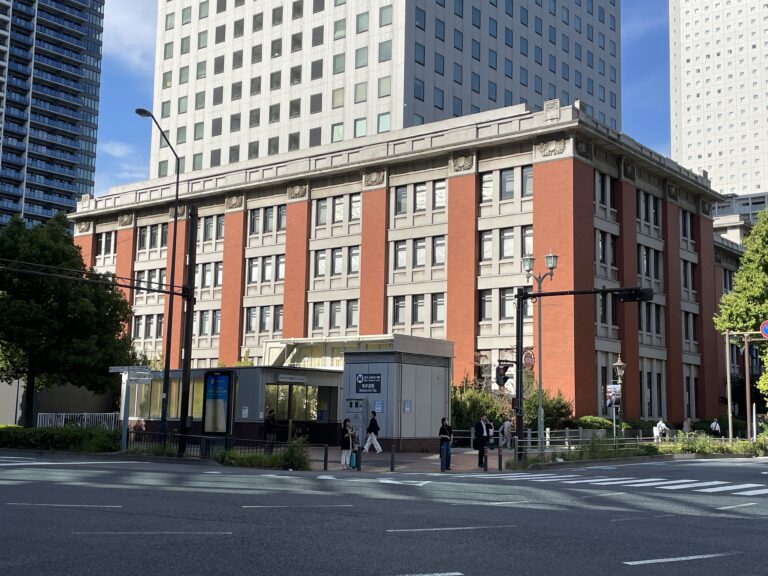This year Yokohama celebrates 165 years since its birth in 1859, when the port was opened to international trade. Our city is young when compared to Kyoto’s 1230 years or even the four centuries of Edo/Tokyo. Moreover, it suffered two catastrophes in 1923 and 1945, when the city was effectively obliterated from below, in the Great Kantō Earthquake, and from above by American aerial fire-bombing. Accordingly, very few buildings survive; only a dozen structures built before 1923 remain intact. However, those that do demonstrate the integration of Western culture into the built landscape of the city, and are a microcosm of the transformation of Japan as a whole. After a century or more, these are Yokohama icons that residents or visitors will recognize.
Two pioneering Japanese architects shaped Yokohama in the first decades of the 20th century: Tsumaki Yorinaka and Endō Oto. Their careers ran on parallel tracks and converged in a landmark that stands to this day. Both were students of the prolific Tatsuno Kingo (1854-1919), best known for his design of Tokyo Station and the nearby Bank of Japan—and over forty more banks nationwide. Tatsuno in turn was the leading disciple of the most influential British architect of the Meiji era, Josiah Conder (1852-1920).
Channeling the spirit of Conder and Tatsuno, Tsumaki and Endō led the third generation of Western-influenced architects. Older by a few years, Tsumaki Yorinaka (1859-1916) put his training at the Imperial College of Engineering and Cornell University to work on Yokohama’s two Red Brick Warehouses (1911 and 1913). Although faced with seismic-vulnerable brick, their cast-iron endoskeletons (still visible today) enabled them to survive the 1923 disaster. Following their 2002 renovation, they are a focal point of the harborside area.
Tsumaki was also proficient in the use of wood, shown in his graceful 1910 design for the Yokohama Catholic Diocese Bishop’s Residence next to Sacred Heart Cathedral in Yamate. He took on a variety of challenges, including Sugamo Prison (1896, now the site of Ikebukuro’s Sunshine 60 skyscraper) and Nihonbashi Bridge (1911), obscured since 1964 by the expressway that looms over it.
In 1905, Endō Oto (1866-1943) was the first Japanese to open an independent architectural firm, based in Yokohama, where his most significant work can still be seen. The Yokohama headquarters of Mitsui & Co. (1911) on Nihon-Ōdori Boulevard was Japan’s first steel-reinforced concrete building. It is recognizable as the backdrop for countless films and television dramas.
The 1923 earthquake was followed by a “recovery and reconstruction” boom, benefitting well-established architects like Endō. Visitors to Iseyama Kōtai Jingū Shrine can appreciate Endō’s ability to apply the clean linear approach of modernism within the Shinmei-zukuri (“sacred light”) traditions of Shintō architecture. The Bashamichi intersection is dominated by his 1926 designs for the Yokohama Raw Silk Conditioning House and its adjacent warehouses. The former, an inspection site to maintain Yokohama’s world-leading reputation for the quality of its silk exports, was rebuilt in 1993 as a municipal office building. One of its three companion warehouses was redeveloped in 2020 as part of the Kitanaka Knot complex. Dubbed Kitanaka Brick, it houses Libushi Bashamichi, an excellent craft brewery, as well as Billboard Live Yokohama. Drink a toast to Endō in his own building!
The careers of Tsumaki and Endō overlapped in their most important collaboration. Across a busy street from Kitanaka Knot is one of central Yokohama’s most distinctive structures. In 1904, the Ministry of Finance charged Tsumaki and his younger protégé with building the Yokohama Specie Bank, to specialize in foreign exchange, including gold and silver bullion. It is a massive, imposing, and intimidating hulk of thick stone undergirded by a cast-iron infrastructure, the key to its longevity: 120 years and counting, as Yokohama’s oldest surviving Western-style structure. After its banking function ceased, the forbidding atmosphere was lightened by a welcoming addition, as the building was transformed in 1967 into the Kanagawa Prefectural Museum of Cultural History. Its Neo-Baroque design and copper dome are recognizable from afar. Visit it to enjoy the museum exhibits, or just to soak up the early 20th century atmosphere. An additional delight is the Tomoshibi café, where the hospitable staff (some of whom have developmental disorders) will enthusiastically greet you.
Request for Advice: I am not sure how to word the final sentence (especially the phrase in parentheses) in a way that is both accurate and also sensitive to the most up-to-date nomenclature for people with special needs, whose personalities are not restricted by conventional expectations. I want to encourage visitors to enjoy the café, since its staff are delightfully uninhibited and cheerful, creating a welcoming atmosphere. However, I don’t know precisely which “developmental disorders” they exhibit, and it might be irrelevant to refer to them. If including a vague description creates problems, it would be better to jettison the sentence altogether. I think that Ry can provide relevant and specialized advice, since he has taught about related topics.


